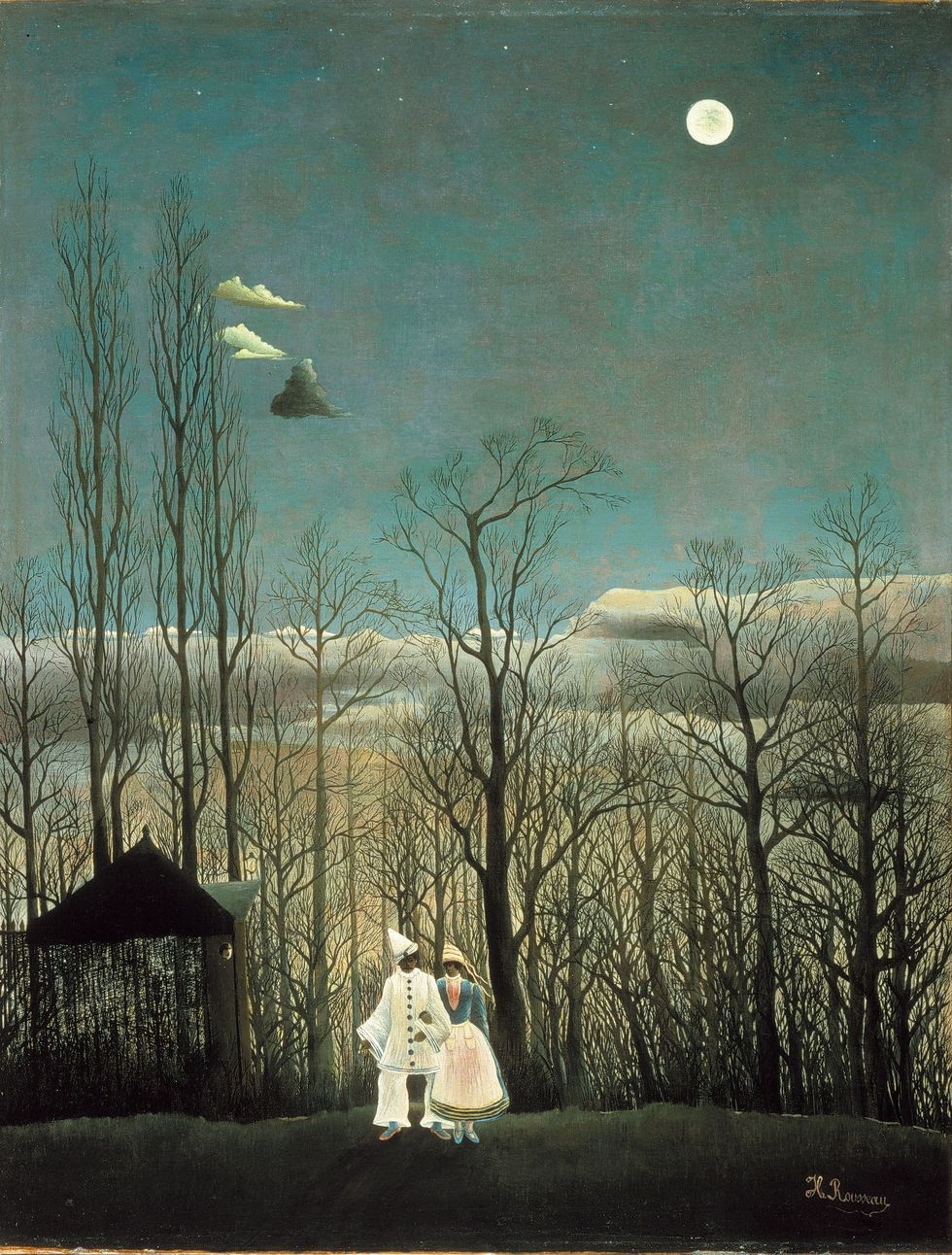Henri Roussea was a French artist active from the years 1886 to 1910. He began painting in his early forties and only saw success as a result of his accidental discovery by Pablo Picasso, who apparently saw a painting of his on the street that was being sold to be painted over. He never was taken seriously after his death in 1910, but eventually critics stopped mocking him for his seemingly "childish" style. I wish to discuss one of his more famous paintings located in the Philadelphia Art Museum, "Carnival Evening."
Henri Rousseau’s painting “Carnival Evening” is a picture comprised of darker colors to simulate night time. The setting is both cozy and unsettling, taking place in a forest at night when the moon is highest, with the clouds in the sky low. Oddly enough, the moonlight is as sparse as the leaves on the wiry, wispy trees.
There are two human figures in this painting dressed in colorful and fanciful carnival outfits. The man is wearing a white hat, an all white flowy gown and pants with his buttons the same color as the gown. He also wears blue socks and brown sandals. The woman next to him is dressed in a more intricate outfit. She wears a white and pink hat, a blue dress with light pink socks, blue sandals, as well as a salmon pink bib. Again, the picture is dark both in color and tone.
Just looking at a digital rendering of the painting or a viewing from afar seems to do this image justice due to a dearth of tinier details present in more realistic paintings, but this picture deserves a closer look. The festive outfits, for example, as color filled as they are, still retain a shade of night and, curiously, a dark, abandoned, dilapidated shack located to their right holds a bodyless face in the corner nearest to the couple. One can barely see it, and I only noticed after very careful inspection. The painting's dark colors would normally clash with the vivid exciting outfits, but the darker use of color renders much of that happiness inert. This alone creates a creepy and tense atmosphere, but the face completes this feeling.
I even felt a slight sense of anger toward the couple for making a foolish choice walking into the barren empty woods on a dark night. This feeling is compounded by the fact that the image is dominated by the giant, looming dead trees that seem to grab at the low hanging clouds with their bare branches. The face could very well be representative of the feeling one gets when alone or with finite company in a place that reduces sensory awareness.
Our primal fears of darkness, loneliness, and silence are present for a reason, and the fact that this couple are in such ridiculous outfits is almost comical in its reasoning. Overall, the painting’s low light, clashing of vivid colors against shades of gray and black, the sense of danger and mysteriousness one receives from the abandoned shack and the face peering in the corner, and the dead trees provide a eldritch and menacing atmosphere that escapes one at first glance but becomes horrifying when the realization slowly comes that, perhaps, they are not alone .






















